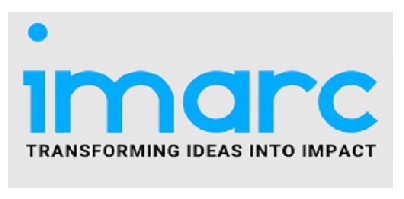Market Research Industry Today
Wearables & Fan Engagement: Key Trends Powering the Sports Technology Boom
MARKET OVERVIEW
The global sports technology market, valued at USD 21.9 billion in 2024, is on a fast‑track expansion toward USD 48.6 billion by 2033. Boosted by real‑time analytics, wearable innovations, AI‑driven coaching tools, IoT‑based performance tracking, and immersive VR training, the industry is empowering athletes, teams, and fans alike to embrace smarter, data‑rich sports experiences.
STUDY ASSUMPTION YEARS
- BASE YEAR: 2024
- HISTORICAL YEAR: 2019–2024
- FORECAST YEAR: 2025–2033
SPORTS TECHNOLOGY MARKET KEY TAKEAWAYS
- Market size is projected to grow from USD 21.9 billion in 2024 to USD 48.6 billion by 2033, achieving a CAGR of 8.79%.
- Software dominates the component segment, powering analytics, performance, and athlete management systems.
- Key technologies include AI/ML, IoT, and AR/VR, which are reshaping performance tracking and fan engagement.
- Sports covered range from soccer, basketball, cricket, tennis, golf, esports, and more.
- Applications span tracking; decision-making and team analysis; analytics and statistics; tactics and simulation; training; game performance & injury‑health analysis.
- End users include coaches, clubs, leagues, sports associations, and others.
- Europe and North America lead adoption, with Asia‑Pacific emerging rapidly through rising sports participation and tech investments.
MARKET GROWTH FACTORS
Technological Innovation in Performance & Analytics (≈155 words)
Advanced technologies—like AI/ML, IoT, and AR/VR—are at the heart of the market's growth. AI/ML algorithms sift through massive datasets from wearables and sensors to provide predictive insights about player performance, fatigue, and injury risks. IoT devices allow for real-time biometric tracking, while AR/VR platforms create training simulations and immersive experiences for fans. This blend of technologies is transforming coaching, enhancing performance, and boosting fan engagement, making smart equipment and analytics essential for league operations and athlete development. As sports organizations look for data-driven strategies, tech providers are rolling out integrated systems that offer insights on a large scale, leading to widespread adoption and investment in the industry.
Rising Demand for Fan Experience & Personalization
Fan engagement is increasingly fueled by technology—think smart stadium overlays, personalized live stats, and virtual interaction channels. AR-enhanced broadcasts and VR environments provide immersive viewing experiences, while analytics platforms tailor content and ticket pricing to individual preferences. As leagues focus on digital experiences, fans are craving richer interactions, which drives the demand for platforms that merge real-time data with entertainment. This shift elevates the importance of software providers and data services in creating experiences that resonate with viewer behavior. Additionally, the rise of esports and online streaming is speeding up the need for these interactive tools. Sports organizations and broadcasters are pouring resources into digital platforms, interactive visuals, and analytics-driven personalization, which is not only fueling market growth but also opening up new revenue streams for tech providers.
Institutional and Organizational Adoption
Clubs, leagues, associations, and federations are increasingly turning to sports technology to boost operational efficiency, prevent injuries, and nurture talent. Software platforms are bringing together training schedules, performance analytics, and team workflows, while wearable devices keep a constant check on athletes' health metrics. Associations are using data to enforce safety protocols and make informed medical decisions, which is leading to safer and smarter sports environments. Additionally, regulatory support and interest from educational institutions are driving a more structured adoption of these technologies. As federations advocate for standardized tracking and performance metrics, providers that offer interoperable and compliant solutions are gaining popularity. This embrace of technology—from grassroots academies to professional leagues—is creating a surge in demand among end-users and attracting investments in scalable sports tech platforms.
Request for a sample copy of this report: https://www.imarcgroup.com/sports-technology-market/requestsample
MARKET SEGMENTATION
- Breakup by Component:
- Software
- Wearable devices and sports equipment
- Services
- Breakup by Technology:
- Artificial intelligence/machine learning (AI/ML)
- Internet of Things (IoT)
- Augmented reality/virtuality (AR/VR)
- Breakup by Sports:
- Soccer
- Baseball
- Basketball
- Ice hockey
- American Football/Rugby
- Tennis
- Cricket
- Golf
- Esports
- Others
- Breakup by Application:
- Tracking
- Decision making and team analysis and management
- Analytics and statistics
- Tactics and simulation
- Training
- Game performance analysis and injury and health analysis
- Breakup by End User:
- Coaches
- Clubs
- Leagues
- Sports associations
- Others
- Breakup by Region:
• North America (United States, Canada)
• Asia Pacific (China, Japan, India, South Korea, Australia, Indonesia, Others)
• Europe (Germany, France, United Kingdom, Italy, Spain, Russia, Others)
• Latin America (Brazil, Mexico, Others)
• Middle East and Africa
REGIONAL INSIGHTS
Right now, Europe and North America are leading the charge in the sports technology market. Their robust sports infrastructure, significant investment in innovation, and well-established digital ecosystems are keeping adoption rates high. Meanwhile, the Asia Pacific region is making rapid strides, fueled by a rise in sports participation, increased technology investments in countries like China, Japan, and India, and a growing interest from leagues and clubs in smart training solutions.
RECENT DEVELOPMENTS & NEWS
Recent advancements include the wider use of biometric wearables and AI-driven coaching tools that provide predictive injury prevention and tailored insights for athletes. Augmented reality (AR) and virtual reality (VR) training modules have become mainstream, offering immersive preparation environments. Fan engagement tools have also evolved, featuring real-time overlays and analytics that create a rich, interactive viewing experience. Teams and leagues are increasingly investing in interoperable platforms and scalable solutions, signaling a clear shift toward comprehensive, technology-driven sports ecosystems.
KEY PLAYERS
- Catapult Group International Ltd.
- Garmin Ltd.
- Infosys Limited
- IBM (International Business Machines Corporation)
- Oracle Corporation
- Pixellot Ltd.
- SAP SE
- Stats Perform
- Zebra Technologies Corporation
Ask Analyst for Customization: https://www.imarcgroup.com/request?type=report&id=12539&flag=C
If you require any specific information that is not covered currently within the scope of the report, we will provide the same as a part of the customization.
About Us:
IMARC Group is a global management consulting firm that helps the world’s most ambitious changemakers to create a lasting impact. The company provides a comprehensive suite of market entry and expansion services. IMARC offerings include a thorough market assessment, feasibility studies, company incorporation assistance, factory setup support, regulatory approvals and licensing navigation, branding, marketing and sales strategies, competitive landscape, and benchmarking analyses, pricing and cost research, and procurement research.
Contact Us:
IMARC Group
134 N 4th St. Brooklyn, NY 11249, USA
Email: sales@imarcgroup.com
Tel No: +1-631-791-1145
Share on Social Media



Other Industry News
Ready to start publishing
Sign Up today!








